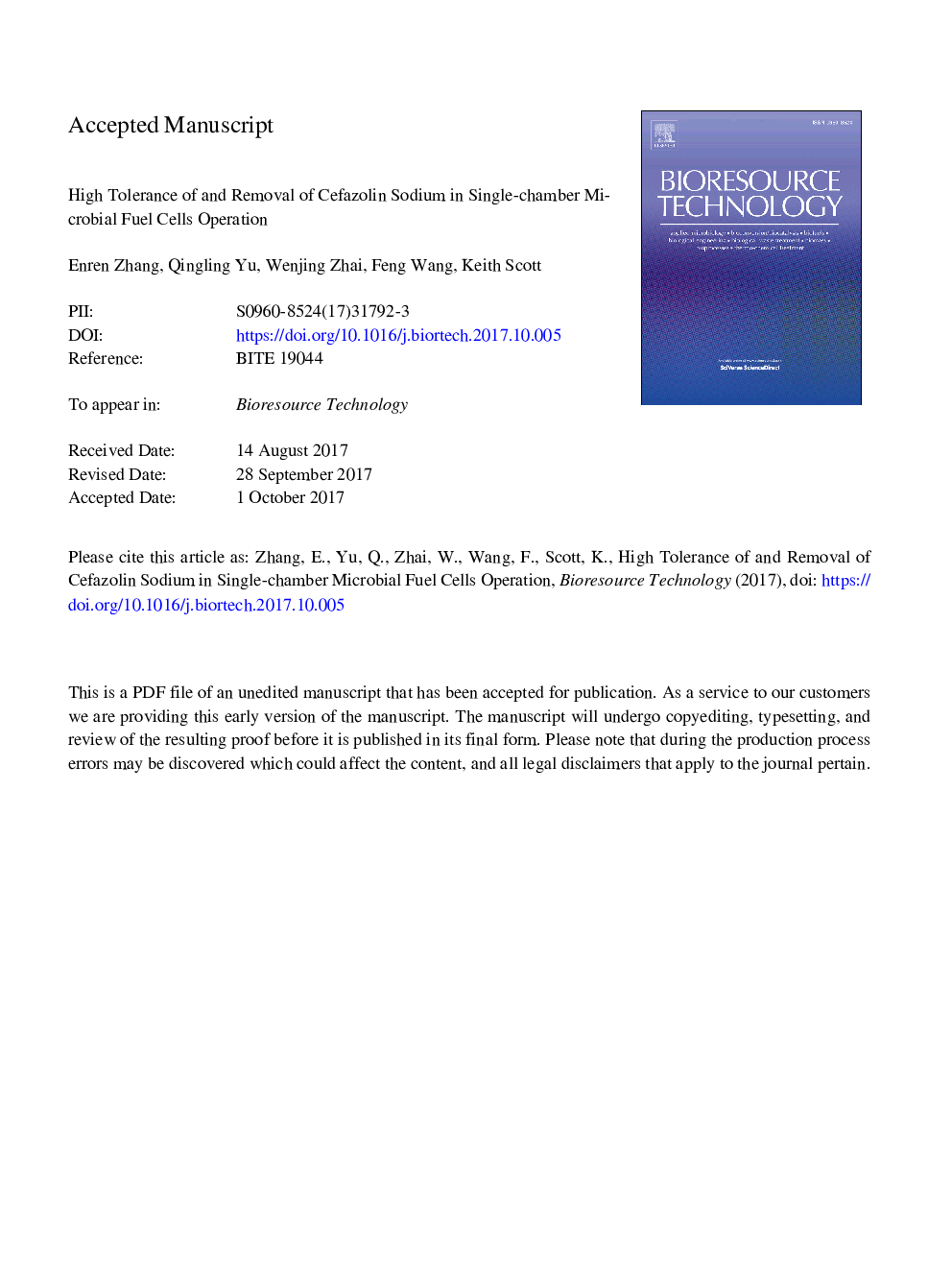| Article ID | Journal | Published Year | Pages | File Type |
|---|---|---|---|---|
| 4996430 | Bioresource Technology | 2018 | 26 Pages |
Abstract
Single-chamber microbial fuel cells (MFCs) have been shown to be a promising approach for cefazolin sodium (CFZS)-contaminated wastewater treatment, in terms of electricity production, high CFZS tolerance and effective CFZS removal. MFCs exposed to CFZS loadings up to 100â¯mgâ¯Lâ1, produced stable power of 18.2â¯Â±â¯1.1â¯Wâ¯mâ3 and a maximum power of 30.4â¯Â±â¯2.1â¯Wâ¯mâ3, similar to that of CFZS-free MFCs (stable power 19.4â¯Â±â¯0.8â¯Wâ¯mâ3 and maximum power 32.5â¯Â±â¯1.6â¯Wâ¯mâ3), notwithstanding a longer acclimitisation MFC activation. More anodophilic genera (i.e. Acinetobacter, Stenotrophomonas, Lysinibacillus) and antibiotic-resisting genera (i.e. Dysgonomonas) were enriched in CFZS acclimitised anodes. Both the thickness of biofilms and the duration of CFZS acclimitisation were essential for the development of high CFZS tolerance (e.g. 450â¯mgâ¯Lâ1). The inhibition of MFCs by CFZS was reversible. The present MFCs generated a CFZS removal rate of 1.2-6.8â¯mgâ¯Lâ1â¯hâ1 without any apparent inhibition of electricity production.
Related Topics
Physical Sciences and Engineering
Chemical Engineering
Process Chemistry and Technology
Authors
Enren Zhang, Qingling Yu, Wenjing Zhai, Feng Wang, Keith Scott,
